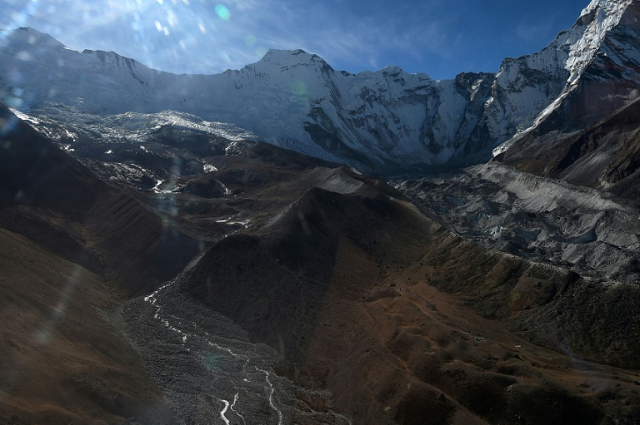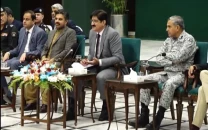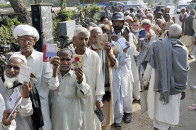‘No water, no village’: Experts anticipate water woes in Himalayan ranges
New documentary highlights villagers observing less snowfall as one of the alarming symptoms of climate change

Water disputes in most regions are estimated to deepen in tandem with water scarcity around the world. But the crisis will hit the valleys of the Himalayan ranges harder, a new documentary highlighted on Sunday.
Lobzang Wangtuk, the water conservationist and the founder of Navikarana Trust, an organization working in the Himalayan ranges of India, has anticipated that there is a fear of deterioration in water stresses among the villagers after the unprecedented flash floods of 2010.
Commenting on the documentary film titled ‘No Water, No Village’, aired on Express TV on Sunday, Wangtuk noted that there was no research on the melting of glaciers in the region, adding the basic water needs were not being met in the region. “People distribute water through water channels and canals.”
He said that various factors underlie the rapid melting of the glaciers but the foremost among them was the soaring temperatures.
“Millions of people [around the world] will suffer because of water scarcity,” Wangtuk said. But, he added, the people living in valleys will suffer the most.
Munmun Dhalaria, an independent documentary filmmaker, has tried to portray the lives of thousands of people living in mountainous ranges between Pakistan and India.
Pakistan, one of the most vulnerable to the effects of climate change and home to over 7,000 of the world’s known glaciers, is being hit by the global temperature rise.
Read ‘Pakistan must act now to avoid impacts of climate change’
Unusually less snowfall
The documentary highlights that as temperatures continue to rise and glaciers melt at an alarming pace globally, the villagers were observing less snowfall as one of the alarming symptoms of climate change.
“I used to see frequent and sufficient snowfall and a good rain every year when I was very young,” recalled a woman in one of the villages. “The situation is different now,” she added. “We do not have water, we will be in trouble.”
The environmentalists and studies show glaciers – vast bodies of frozen water that sit above the ground – have been melting fast.
A study in 2019 said that the Himalayan glaciers were melting twice as fast now as they were before the turn of the century.
The study, which appeared in Science Advances, is the latest indication that climate change is eating the Himalayan glaciers, threatening water supplies for hundreds of millions of people downstream across South Asia.
“The impact of climate change has been observed everywhere,” commented Dhalaria. She said that the people have been realizing its impact and were trying to take some efforts.
“But both the governments [India and Pakistan] need to take some concrete steps,” Dhalaria urged. She also said that the Indian government has recently pledged to shift its 50 per cent needs to renewable energy by 2050.
She said that it was time to empower states [province] to take their own decisions. “We have to listen to them,” she said.

















COMMENTS
Comments are moderated and generally will be posted if they are on-topic and not abusive.
For more information, please see our Comments FAQ